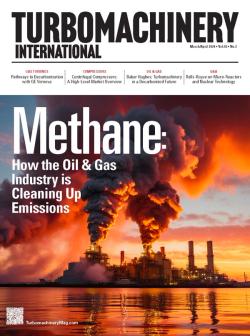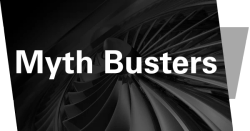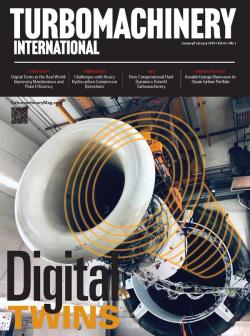
OR WAIT null SECS
© 2024 MJH Life Sciences™ and Turbomachinery Magazine. All rights reserved.
MYTH: TEENAGERS AND COMPRESSORS CAN'T STAY OUT OF TROUBLE
As a teenager, I (Klaus) took chances and subsequently got into a fair share of trouble. No lasting damage was done … I think. From this, I learned lessons such as “nothing ventured, nothing gained,” “do not fear mistakes,” “swing for the fences” and other clichéd idioms that can drive a lifetime of poor decision making.
But one of the most important lessons was, “it is not how often you get into trouble, but how serious the trouble is.” How is this relevant to turbomachinery? After years of running and testing centrifugal compressors, teenagers behave like compressors in many ways.
Teenagers are mostly nice. But sometimes they don’t run where, how, and when they are supposed to run. They can fall apart at the least opportune time. Similarly, centrifugal compressors run into surge much more frequently than they should.
This is usually accidental due to unanticipated situations or operator error. But compressors also tend to be far more resilient than one would expect. Specifically, it may not be relevant that the compressor often surges or for how long. What matters most is the severity of the surge event.
What is surge? A typical centrifugal compressor performance map indicates that there are two limits on the operating range of the compressor. Global aerodynamic flow instability, known as surge, sets the limit for low-flow (or high-pressure ratio) operation. Choke or “stonewall” sets the high-flow limit.
The exact location of the surge line on the map can vary depending on the operating condition and the system piping. As a result, a typical surge margin is established at 10% to 15% above the stated flow for the theoretical surge line. Thus, every compressor has a limit on its operating map where the work input is insufficient to overcome the hydraulic resistance of the system. This results in a breakdown and cyclical flow-reversal in the compressor.
Surge occurs just below the minimum flow that the compressor can sustain against the existing suction to discharge pressure rise (head). Once surge occurs, the flow reversal reduces the discharge pressure or increases the suction pressure.
Eventually, this allows forward flow to resume until the pressure rise again reaches the surge point. This surge cycle continues at a low frequency until some change takes place in the process or the compressor conditions.
The frequency and magnitude of the surge flow-reversing cycle depend on the design, operating condition and piping of the machine. But in some cases, it is sufficient to cause damage to the seals and bearings, and sometimes even the shaft and impellers.
One should also note that strong flow pulsations that originate from reciprocating compressors with insufficient pulsation control upstream or downstream of the centrifugal compressor can move a centrifugal compressor into surge or choke. This can even take place when the steady state surge margins appear to be adequate.
What is weak?
Most compressors are sufficiently robust mechanically to handle weak surge events. The question is what is “weak” and how does one know if it is weak without having to take the risk of surge testing a machine in the field?
The primary surge forces in a compressor are in the axial direction. Therefore, usually the highest probability component for failure is usually the thrust bearing. Damage is likely to occur if axial surge forces exceed the thrust bearing load capacity (driven primarily by the dynamic pressure differential across the front and back of impellers). If these forces are smaller, nothing will happen.
A recent project funded by the Gas Machinery Research Council provides a method to qualify these axial forces. It uses surge testing on a laboratory centrifugal compressor and prediction methods to characterize and quantify these forces, and their frequencies. The results are published, and the models are in the public domain.
This is important since it is now possible to model when surge occurs and estimate if the surge has the potential to cause compressor damage. When performing a dynamic analysis of a centrifugal compressor and its surrounding piping system, we can predict if and where the compressor crosses the surge line.
But we can now also estimate if this surge event is relevant to the life of the compressor. One should cautiously note, though, that all surge events carry the (albeit sometimes remote) chance of damage, and repeated surge events can eventually affect the performance of the compressor.
So, what is the lesson turbomachinery engineers can take away from teenage behavior? Centrifugal compressors within complex piping systems can behave in strange ways and can accidentally run into surge.
This can happen during a compressor station piping system upset, an emergency shutdown, a slow startup, when load sharing and shedding, or even when sequencing machines run in parallel or series. In many instances the surge event may not be severe enough to harm the compressor or its components.
What is more relevant is not the surge event itself but how much permanent damage it causes. Unlike what’s available for parents with teenage kids, we have capabilities to predict the effects of its behavior and how to correct it using state-of-the-art engineering tools.



